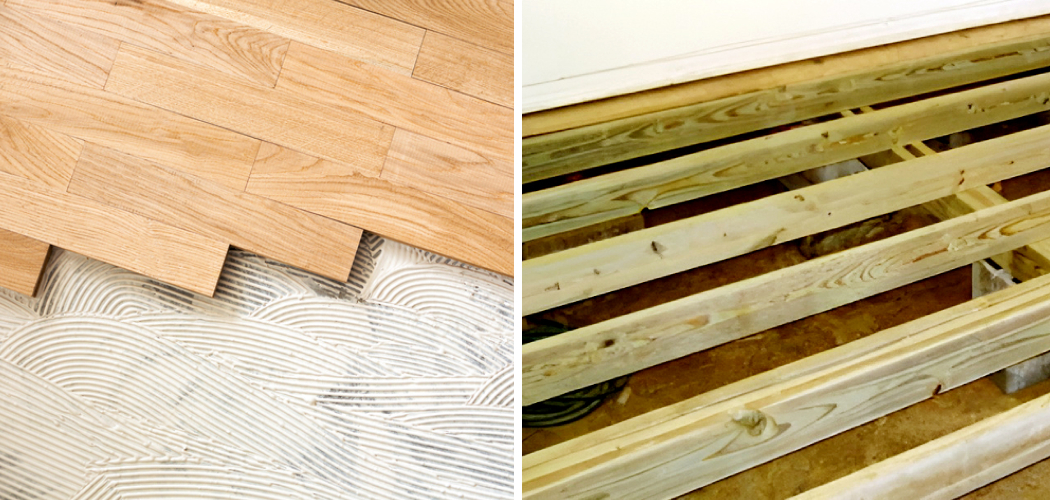Replacing the floor in your mobile home is an important maintenance task that should be noticed. Not only does it improve the look and feel of your mobile home, but it also increases its resale value. Replacing a floor can also make your living space more comfortable and safe. It can even reduce energy costs by making your home more energy efficient.
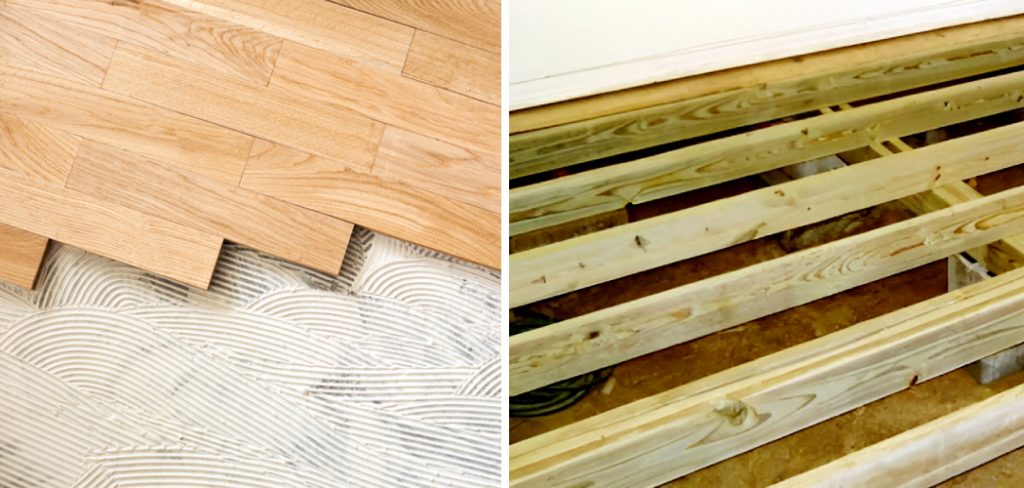
Replacing the floor of a mobile home has many advantages. For starters, it can make an older mobile home look brand new. Additionally, it can improve the structural integrity of the mobile home and increase its energy efficiency. Replacing old, worn-out floors with newer materials can also help prevent moisture from entering the home’s interior and creating mold and mildew. You can find step-by-step instructions on how to replace mobile home floor in this blog article.
Tools You Will Need
- Hammer
- Tape measure
- Pry bar
- Utility knife
- Jigsaw or circular saw
- Sander and sandpaper
- Vacuum cleaner
- Safety glasses
- Caulk and caulking gun
- Foam underlayment or insulation board
- Plywood or OSB (oriented strand board) panels
- Floor transition strips
Once you have all the necessary tools, it is time to start replacing your mobile home floor. Begin by removing any existing baseboards and trim around the room’s edges. Then use the utility knife to cut away any carpet or vinyl flooring that may be present.
Step-by-step Instructions for How to Replace Mobile Home Floor
Step 1: Inspect the Old Floor
First, inspect the floor for any damage or signs of rot. If you find any, repair these areas before moving on with your replacement process. Once you have identified and repaired any problem spots, it’s time to remove the old mobile home floor. Use a pry bar to loosen any stubborn areas, and wear protective gloves and eyewear.
Step 2: Clean the Subfloor
After you have removed the old flooring, clean the underlying subfloor to remove any debris or dirt. Vacuum the area thoroughly to ensure no residual particles remain. When buying new flooring materials, it is important to make sure you have the right amount. Measure the area of your mobile home where you plan to install new flooring and add 10% extra if any mistakes are made during installation.
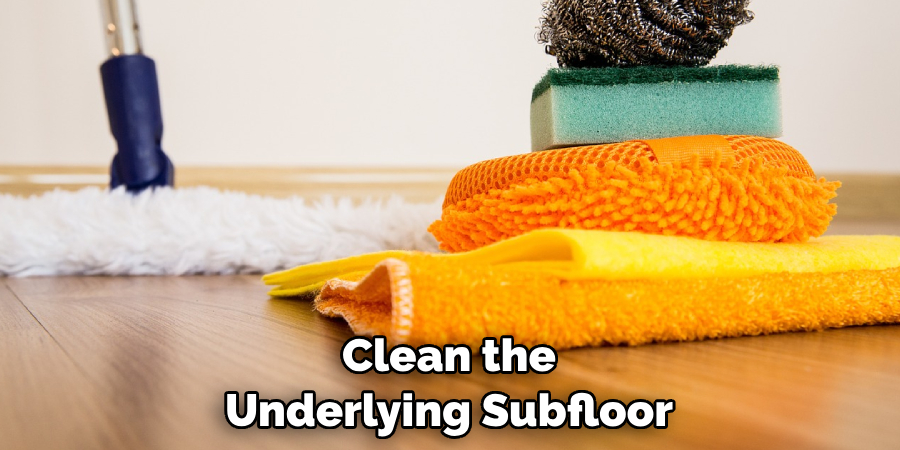
Step 3: Purchase New Floor
When purchasing new flooring for a mobile home, choosing flooring specifically designed for such purposes is important. This will ensure the flooring has a longer life and is better equipped to handle any moisture that may accumulate in the home.
Installing an underlayment before laying down your new mobile home floor is important. This will prevent uncomfortable bumps or ridges when walking across the floor and provide added protection against water damage.
Step 4: Start Installing Flooring
Now that the area is prepped, it’s time to install your new mobile home floor. Be sure to follow the manufacturer’s instructions for best results. After laying down your new floor, apply an adhesive or sealant along the edges to ensure it is properly secured. This will also help protect against water damage and provide added stability for your flooring materials.
Step 5: Place Mouldings
Once you have applied the adhesive or sealant, place molding along the edges of your mobile home floor for a professional finish. Add any finishing touches to complete your new floor, such as trim or baseboards. This will help to give your mobile home a finished and polished look.
Following these steps, you can successfully replace your mobile home floor and enjoy a new look for many years. You can have the perfect flooring in no time with patience and dedication.
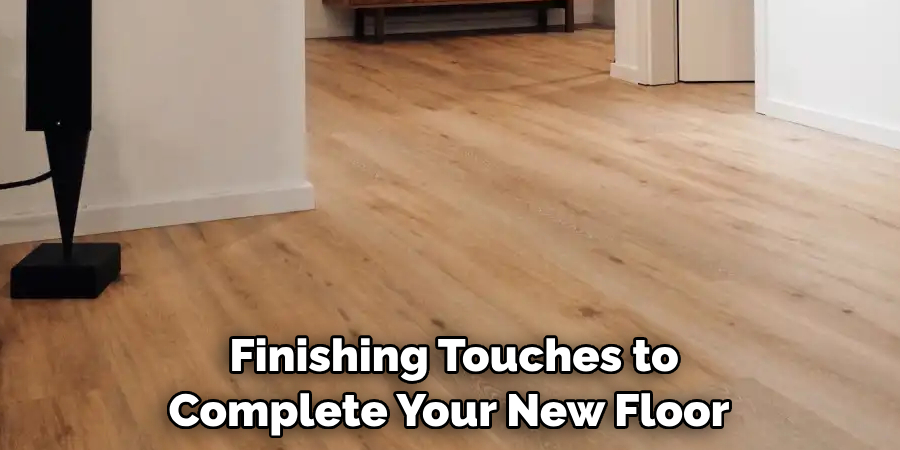
Tips for How to Replace Mobile Home Floor
- Ensure all occupants (including pets) in the mobile home are safely evacuated before beginning the project.
- Make sure to wear protective gear at all times, including work gloves and safety glasses.
- Have a fire extinguisher close by as an extra precaution in case sparks start flying due to cutting or other power tools.
- Always use the right tools for the job, and be mindful of sharp edges when cutting materials such as wood or vinyl flooring.
- Be aware of any wiring that may be in the way before beginning the replacement process, and make sure to turn off power sources in advance if needed.
- Use proper lifting techniques when moving heavy pieces of material around.
- Ensure all materials have been measured and cut accurately before installing them in the mobile home flooring.
- Scrutinize your work after completing the replacement process, looking for gaps or other problems that could become more serious over time. If you identify any issues, make sure to fix them immediately.
Following these tips and precautions can help ensure your mobile home floor replacement project goes smoothly and safely.
How Do You Maintain Your New Mobile Home Floor After Installation?
Once your new mobile home floor has been installed, there are a few things you should do to maintain and extend the life of your floor. First, it’s important to ensure that spills are cleaned up as soon as they happen. Use a mild cleaner to spot-clean any areas that may have been affected by messes or dirt tracked in from outside. Additionally, you should mop your floor regularly with a mild cleaner to keep it at its best.
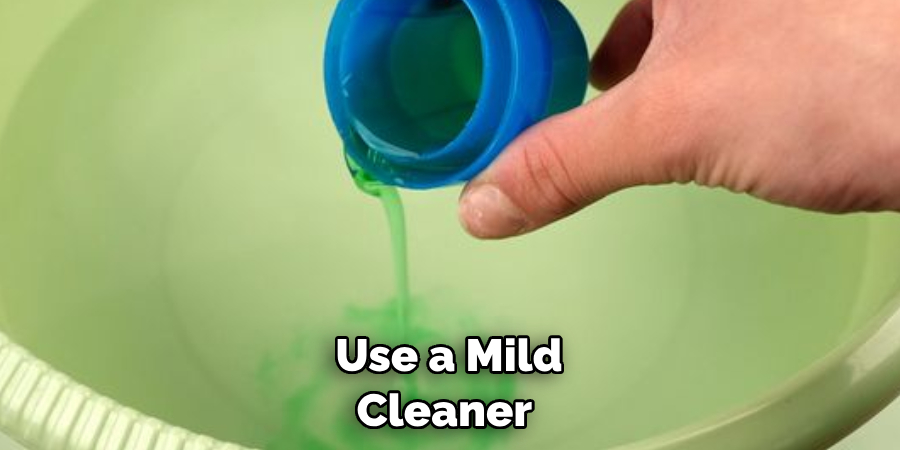
Second, avoid using harsh chemicals or abrasive cleaners on the mobile home floor. Harsh chemicals and abrasives can damage the finish of the surface and can make it vulnerable to staining and scratches.
It’s also best to buy mats and rugs with non-skid backing to prevent slipping or sliding. Third, use furniture protectors such as felt pads on the bottom of any chairs or tables that may be moved around on the floor. This will help avoid scratches from metal or plastic feet that can be dragged across the surface of your mobile home floor.
Is It Necessary to Hire a Professional to Replace the Floor in a Mobile Home?
No, hiring a professional to replace the floor in a mobile home is unnecessary. However, with any major home improvement job, certain advantages come with hiring a professional contractor. For instance, they have the experience and knowledge to ensure the job is done correctly. They also often have access to materials at wholesale cost and can get discounts on labor. Furthermore, they are familiar with the local codes and regulations to be followed when making home improvements.
That being said, if you have basic DIY skills and are willing to research, it is possible to replace the floor in a mobile home on your own. You will need to obtain the necessary materials for the job (e.g., underlayment, flooring, etc.), and do some basic demolition work. Additionally, it is important to make sure that you follow all the local codes and regulations when replacing a mobile home floor.
What Common Mistakes Should Be Avoided When Installing New Flooring in a Mobile Home?
When installing new flooring in a mobile home, some common mistakes should be avoided. Before beginning the project, ensure you have the right tools and materials for the job. Make sure to measure twice when cutting any pieces of wood, as it is easy to make mistakes if not done accurately.
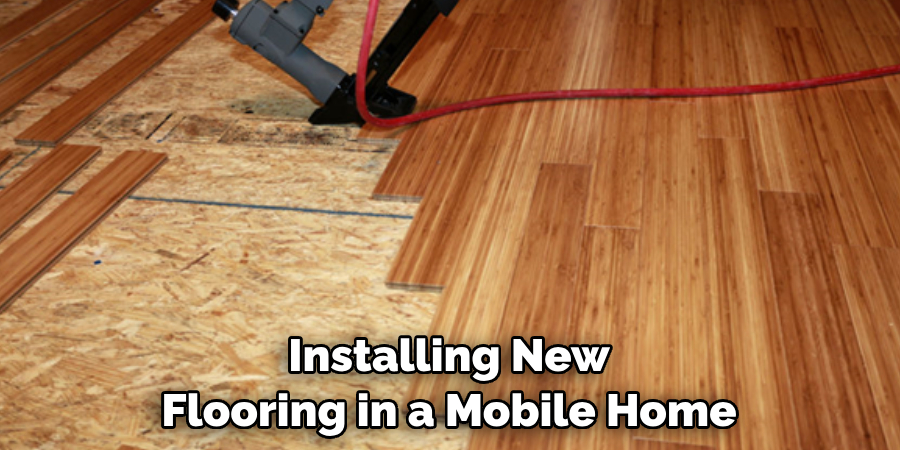
Ensuring that the existing subfloor is adequately prepared for the new flooring is also important. If not, it could lead to problems with moisture, which can cause warping and rot over time. Additionally, make sure you select the right kind of flooring for your mobile home. Some types of flooring are better suited for specific areas in the home than others.
When laying down the planks or tiles, make sure they are laid in a straight line. If the planks are not properly aligned, it will be noticeable and could cause issues when you install trim or molding along the edges of the floor. Additionally, take extra care when cutting any pieces that need to fit around corners or doorways. It is best to use a jigsaw for these cuts as it will give you the precision needed for a professional-looking installation.
Conclusion
In conclusion, replacing the floor of a mobile home is challenging, but it can be done with some preparation and planning. There are many steps involved in the replacement process, including measuring, ordering materials, removing the old flooring, preparing the subflooring, installing new flooring material, and finishing touches.
It is important to research thoroughly before attempting such a project as there are a variety of flooring materials available, different tools and techniques for installation, and potential safety hazards. This article has been beneficial for learning how to replace mobile home floor. Make Sure the preventive measures are followed chronologically.
